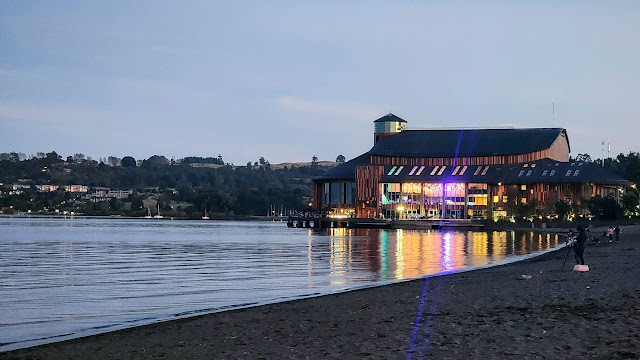The Magic of the South of Chile
I was born in La Serena, in the north of Chile, not far from some of the world's most powerful telescopes, making it a well-known spot for astronomers like me. My mother, however, is from the south of Chile. Our country stretches through various latitudes, leading me to jokingly call it the "one-dimensional country." The north is dry, vast, and bare, while the south is alive with forests and green mountains—a stark contrast to my desert upbringing. My favorite southern spot is Chiloe Island, rich in myths and traditions from both the Mapuche people and Spanish immigrants. A few weeks ago, I revisited Chiloe with my mother, echoing a journey we first made a decade ago.
As a scientist trained to think critically, some might expect me to view the "magic" of the South's myths as obsolete. Yet, I find great joy and respect in these traditions, which ignite a sense of curiosity akin to that of our ancestors—a trait shared with astronomers. Among these tales, the story of "Cai Cai and Tren Tren Vilu" particularly resonates with me. It speaks of two serpent-like spirits representing water and earth, whose battles cause earthquakes and tsunamis. This myth creatively interprets the natural disasters common to the region, which continually sculpt its islands, rivers, and mountains. Such forces of nature, present across the solar system, have shaped features like Saturn's rings and the Moon's formation. The enduring spiritual bond people have with these myths offers a unique perspective on conveying information, from which we scientists could learn.
During this trip, I visited my cousin Johanna for the first time since she moved to Chiloe three years ago. She teaches at a small school in Ancud, a city on the island, and suggested I share my career journey with the students. On the trip's coldest day, I spoke to a group of 12-year-olds. Engaging them was initially challenging (certainly my fault), but gradually, we found common ground for a lively exchange of questions and perspectives. Some of their questions, like "What happens if the Sun/Moon/Stars disappear?", were tough but invigorating. Such questions encourage us to seek ingenious solutions and keep us inquisitive, much like children who never stop asking. The full impact of our one-hour conversation may remain unknown, but the experience was genuinely rewarding for me.
On my final day in the South, before leaving, I visited Frutillar with my mother and two friends. This charming city, situated on the shores of Lake Llanquihue, is renowned for its German heritage, evident in the delicious "kuchen" and the picturesque views of the Osorno volcano, which bears a striking resemblance to Mount Fuji. It's also home to the impressive "Teatro del Lago," where I once had the privilege to perform as an opera singer.
As we walked along the lake on a beautifully clear day, we were treated to a stunning sunset. After the sun dipped below the horizon, a brilliant light caught my attention, emanating from the Osorno volcano. For a moment, I was puzzled about its source, until I realized it was the Moon rising behind the volcano, following a path that seemed to position it precisely atop the peak.
My inner child couldn't contain the joy and excitement, which, thanks to my extroverted personality, quickly became apparent as I began shouting to everyone nearby, "Look at the moon! The moon! The moon is on the volcano!" I eagerly took many pictures and videos of this enchanting spectacle. It was a truly magical moment, one that made me feel a deep connection to the awe that our ancestors surely felt.
Sofia Gallego












Comments
Post a Comment